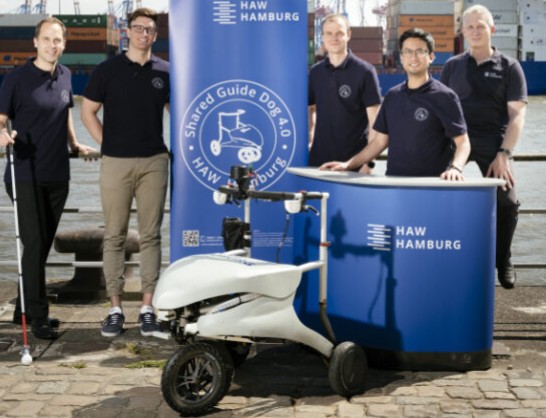
Project Description
This academic research project investigated the accuracy limits of Ultra-Wideband (UWB) technology for the "Shared Guide Dog 4.0," an assistance system for visually impaired individuals. The primary goal was to evaluate UWB as a reliable alternative to GPS for precise navigation in urban environments where satellite signals are often weak or unavailable.
The study involved a comparative analysis between an older UWB system (based on the DW1000 chip) and a new-generation system (using the DW3000 chip) to determine its suitability for real-world application.
Challenges
High-Precision Requirement
The system needed to achieve positioning accuracy of less than 30 cm for safe navigation on narrow sidewalks and around obstacles.
Environmental Interference
Urban canyons, buildings, and vehicles cause significant multipath propagation, degrading radio-based positioning accuracy.
Hardware Limitations
Discovery of unexpected hardware issue where the UWB tag's battery was shielding the antenna, causing signal loss and inconsistent performance.
Cost-Effectiveness
Distance between fixed UWB anchors needed to be maximized without compromising required accuracy for practical deployment.
Solution & Methodology
A systematic, multi-stage testing methodology was developed to rigorously evaluate the UWB system's performance. My innovative approach involved:
-
Systematic Testing: Conducted comprehensive 1D and 2D tests in controlled indoor environments and challenging outdoor settings to simulate real-world scenarios.
-
Dynamic Analysis: Used a bicycle to simulate constant motion of the Shared Guide Dog, evaluating system performance under dynamic conditions.
-
Problem Isolation: Designed specific tests that isolated the battery shielding problem—a key finding for future hardware revisions.
-
Data-Driven Analysis: Utilized Python and Excel for statistical analysis of accuracy, standard deviation, and error source identification.
Results & Outcome
Superior Accuracy
DW3000 achieved ±4 cm average accuracy, far exceeding project requirements
Critical Hardware Insight
Identified battery interference issue, leading to hardware redesign recommendations
Viability Confirmation
Confirmed DW3000-based UWB as highly promising technology for the project